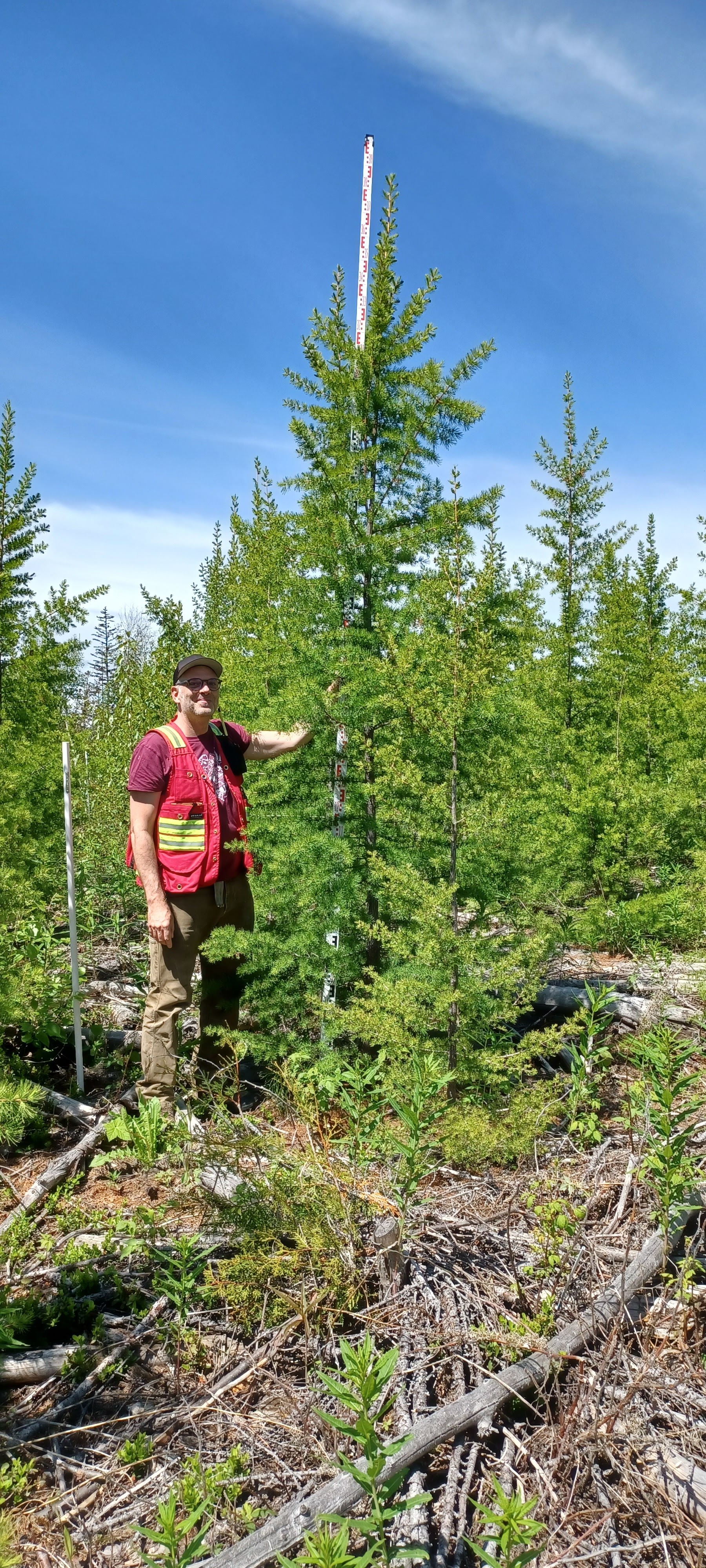Western larch tree breeding program
Western larch occupies a small but locally important component of British Columbia’s timber supply.
The tree improvement program began in 1987 and has progressed rapidly. The program’s goal is to develop well-adapted seed, selectively bred to produce trees with improved volume growth while maintaining acceptable levels of genetic diversity.
The genetic worth (volume gain) of this seed is more than 20 percent at rotation age. Current research activities focus on realized genetic gain testing and developing efficient methods of screening for wood properties.
Seed Planting Zones
Two seed planning zones (SPZ), Nelson and East Kootenay, were delineated for tree improvement and two seed orchards were established in Vernon in 1990. An additional Nelson high elevation orchard was established in 2003. Seed production began in 1999 and presently about 90 percent of the eight million western larch seedlings planted annually in B.C. come from seed orchards.
In 2010, new western larch interim seed planning zones were developed to account for climate change. These new interim zones were developed from bioclimate models, global climate models and maps of western larch genetic variation. They enable modest quantities of western larch to be planted far outside of its natural range on lands predicted to be climatically-suited for western larch.
References
- Ratcliffe, B, F.J. Hart, J. Klapste, B. Jaquish, S.D. Mansfield and Y. A. El-Kassaby. 2014. Genetics of wood quality attributes in Western Larch. Annals of Forest Science. Vol. 71(3): 415-424.
- Leites L., GE Rehfeldt, AP Robinson, N. Crookston and B. Jaquish. 2012. Possibilities and limitations of using provenance tests to infer forest species growth responses to climate change. Natural Resource Modelling. Vol 25(3):409-433.
- Rehfeldt G.E. and B.C. Jaquish. 2010. Ecological impacts and management strategies for western larch in the face of climate change. Mitigation and Adaptation Strategies for Global Change. 15(3):283-306.

Carrying out measurements on a second-cycle western larch Nelson region progeny trial (age~6) near Salmon Arm.
